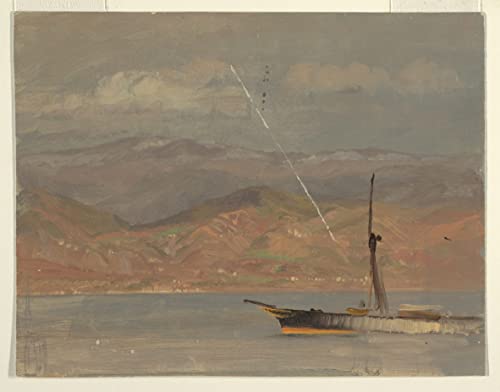If you’re planning a trip to Messina, you’re in for a treat. This stunning city is located in the northeastern corner of the island of Sicily, at the Strait of Messina. The landscape of Messina is one of the most beautiful in all of Italy, with breathtaking views of the coastline and surrounding mountains.

The geographical context of Messina is what makes it so unique. The city is situated on the lower slopes of the Peloritani Mountains, which offer picturesque landscapes and plenty of hiking trails for nature lovers. On the other side of the city lies the Strait of Messina, which separates Sicily from mainland Italy and is known for its strong currents and whirlpools.
Whether you’re interested in the historical significance of the city, the cultural attractions, or the economic aspects, Messina has something to offer everyone. From its ancient Siculan colony roots to its more recent struggles with earthquakes and plagues, Messina has a rich and fascinating history. With its stunning landscape, vibrant culture, and friendly locals, Messina is a must-visit destination for anyone traveling to Italy.
Key Takeaways
- Messina is located in the northeastern corner of the island of Sicily, at the Strait of Messina.
- The city is surrounded by the Peloritani Mountains and the Strait of Messina, offering stunning views and plenty of hiking trails.
- Messina has a rich history and culture, making it a must-visit destination for anyone traveling to Italy.
Geographical Context

https://www.youtube.com/watch?v=Sa6aaGPkSPg&embed=true
Location and Landscape
Messina is a city located in northeastern Sicily, Italy. It is situated on the Strait of Messina, opposite the city of Reggio di Calabria in Calabria. The city is surrounded by the Peloritani Mountains, which are part of the larger Apennine mountain range. The city’s landscape is characterized by hills, mountains, and a beautiful coastline.
Strait of Messina
The Strait of Messina is a narrow waterway that separates Sicily from mainland Italy. It is approximately 20 miles (32 km) long and 2 miles (3 km) wide in the north, and 10 miles (16 km) wide in the south. The strait is also known for its strong currents, which can be dangerous for ships and boats. Despite this, it is an important shipping lane, connecting the Tyrrhenian Sea to the north with the Ionian Sea to the south.
Peloritani Mountains
The Peloritani Mountains are a mountain range that runs along the northeastern coast of Sicily. They are named after the ancient city of Pelorus, which was located in the area. The range is characterized by rugged peaks, deep valleys, and dense forests. The highest peak is Montagna Grande, which reaches a height of 1,340 meters (4,396 feet). The mountains are home to a variety of flora and fauna, including wild boars, eagles, and pine trees.
Overall, Messina’s location and landscape make it a unique and beautiful city. Its proximity to the Strait of Messina and the Peloritani Mountains provide visitors with a variety of outdoor activities, such as hiking, swimming, and boating.
Historical Overview
https://www.youtube.com/watch?v=GIgGw0OEbiI&embed=true
Messina is a city with a rich history that spans over 2,700 years. The city has been inhabited since ancient times and has been a crossroads of cultures and civilizations. In this section, you will learn about the major events and periods that have shaped the landscape of Messina.
Ancient History
The city of Messina was founded by Greek colonists from Zancle in 756 BC. The city was originally named Messene after the ancient city of Messene in the Peloponnese. The city was an important trading center and was known for its wealth and prosperity.
In 397 BC, the city was sacked by the Carthaginians in the Battle of Messene. The city was later rebuilt by the Greeks and became an important center of trade and commerce.
Medieval Period
During the Roman period, Messina was an important port and was known for its trade in grain and wine. The city was also a major center of Christianity and was the site of a number of important churches and monasteries.
In the 5th century AD, the city was conquered by the Goths and was later ruled by the Byzantines. In the 11th century, the city was conquered by the Normans under Count Roger I of Sicily.
Modern History
During the Middle Ages, Messina was an important center of trade and commerce and was known for its silk production. The city was also a major center of art and culture and was home to a number of important artists and writers.
In 1783, the city was hit by a massive earthquake that destroyed much of the city. The earthquake was followed by a tsunami that caused further damage. In World War II, the city was bombed by both the Allies and the Axis powers.
Today, Messina is a vibrant city that is known for its beautiful architecture, rich history, and stunning landscapes. The city is a popular tourist destination and attracts visitors from all over the world.
Cultural Significance
https://www.youtube.com/watch?v=pJFctrwIE9A&embed=true
Messina is a city with a rich cultural heritage that can be seen in its architecture, religious heritage, arts, and festivals. Here are some of the cultural highlights that you can explore during your visit.
Architecture and Monuments
The city of Messina is home to several stunning architectural landmarks, including the Duomo, which is one of the most important religious buildings in Sicily. The Duomo’s bell tower is a notable feature, standing at over 230 feet tall and offering breathtaking views of the city and surrounding landscape.
Another architectural wonder is the Fontana di Orione, a beautiful fountain located in the center of the city that dates back to the 16th century. The fountain features intricate carvings and sculptures, and is a popular spot for tourists and locals alike.
Religious Heritage
Messina is also known for its rich religious heritage, with several notable churches and religious sites throughout the city. One example is the Santissima Annunziata dei Catalani, a beautiful church that dates back to the 12th century. The church features stunning architecture and artwork, including a beautiful statue of the Madonna and Child.
Arts and Festivals
Messina is a city that loves to celebrate, and there are several arts and festivals that take place throughout the year. One of the most famous is the Processione della Vara, a religious procession that takes place in July and features a stunning statue of the Virgin Mary carried through the streets of the city.
« Example of Landscaping Drawing: Tips and Tricks for Beginners What’s Wrong with Landscape Fabric: A Friendly Explanation »
Another notable festival is the Feast of the Madonna, which takes place in August and celebrates the city’s patron saint. The festival features music, parades, and fireworks, and is a highlight of the city’s cultural calendar.
Overall, the city of Messina is a cultural treasure trove, with stunning architecture, beautiful religious sites, and vibrant festivals that showcase the city’s rich history and heritage.
Economic Aspects
https://www.youtube.com/watch?v=bi7Ss3hSHL4&embed=true
When it comes to the economy of Messina, the city’s port plays a significant role. The Port of Messina is one of the most important ports in the Mediterranean and serves as a gateway for trade and tourism between Sicily and mainland Italy. The port is equipped to handle all types of cargo, including containers, vehicles, and bulk goods.
Port of Messina
The port of Messina is strategically located at the entrance to the Strait of Messina, which connects the Tyrrhenian Sea to the Ionian Sea. The port has a long history of trade and commerce dating back to ancient times. Today, it is a major hub for ferry services to and from the mainland, as well as for cruise ships visiting Sicily.
Trade and Industry
Trade and industry are also important to the economy of Messina. The city is home to a number of small and medium-sized businesses, as well as several international companies. The International Fair of Messina is an annual event that brings together businesses from all over the world to showcase their products and services.
Agriculture and Wine Production
The region surrounding Messina is known for its fertile soil and mild climate, which make it ideal for agriculture. The city is particularly famous for its wine production, which dates back to ancient times. Today, the wine industry is one of the most important sectors of the local economy, with several wineries producing high-quality wines that are sold all over the world.
In addition to wine, the region is also known for its production of citrus fruits, olives, and other crops. The local agriculture industry is supported by a network of small and medium-sized farms, as well as by several agricultural cooperatives.
Overall, the economy of Messina is diverse and multifaceted, with a strong focus on trade, industry, and agriculture. The city’s strategic location, well-equipped port, and rich cultural heritage make it an attractive destination for businesses and tourists alike.
Transportation and Connectivity
https://www.youtube.com/watch?v=gdgp96o_s60&embed=true
Messina is well connected to other parts of Italy and the world through various modes of transportation. Whether you prefer to travel by sea, rail, or road, there are plenty of options available to you.
Ferry Services
If you’re arriving from the Italian mainland, you can take a ferry from Reggio Calabria to Messina. The journey across the Strait of Messina is short but picturesque, and you’ll be right at the Messina cruise port when you disembark. Ferry services are also available to Naples and other destinations.
Railway and Bus Networks
Messina has a railway station that connects it to major cities in Italy, including Rome, Milan, and Naples. The railway station is located in the city center, making it easy to get to your destination. If you prefer to travel by bus, there are several bus companies that operate in Messina and provide connections to other parts of Sicily and Italy.
Bridge and Lighthouse
The Strait of Messina is spanned by a bridge that connects Sicily to the Italian mainland. The bridge is a major engineering feat and provides a stunning view of the surrounding landscape. If you’re interested in lighthouses, there is a historic lighthouse located in Torre Faro, a small town on the northeastern tip of Sicily. The lighthouse dates back to the 16th century and is still in operation today.
Overall, Messina is a well-connected city that offers plenty of transportation options to visitors. Whether you prefer to travel by sea, rail, or road, you’ll find that getting around is easy and convenient.
Education and Population

University of Messina
If you’re looking to further your education, the University of Messina is a great option. Founded in 1548, it is one of the oldest universities in Italy. The university has a diverse range of faculties, including medicine, law, engineering, and humanities. It also has a number of research centers, such as the Center for Advanced Studies in Energy and Environment (CASE), which conducts research on renewable energy, and the Institute for High Performance Computing and Networking (ICAR), which focuses on computer science and information technology.
Demographics
Messina is the third largest city on the island of Sicily, with a population of more than 218,000 inhabitants in the city proper and about 650,000 in the surrounding metropolitan area. The city has a diverse population, with a mix of Italian and Sicilian cultures. The majority of the population is Catholic, and there are also small Jewish and Muslim communities.
In terms of age distribution, Messina has a relatively balanced population. According to the latest census data, about 17% of the population is under 18 years old, 64% is between 18 and 64 years old, and 19% is over 65 years old. The city also has a relatively high percentage of foreign residents, with about 5% of the population coming from other countries.
Overall, Messina is a vibrant city with a rich history and culture. Whether you’re interested in furthering your education or just exploring the local community, there is something for everyone in this beautiful city.
Tourism and Leisure
https://www.youtube.com/watch?v=DY2KPgDS16w&embed=true
If you are planning to visit Messina, you will be amazed by the beautiful landscape that surrounds the city. Messina is located in northeast Sicily, between the Ionian and Tyrrhenian Seas. The city is surrounded by mountains and hills, and the view of the sea is breathtaking.
Attractions and Sightseeing
Messina is a city rich in history and culture, and there are many attractions and sightseeing opportunities for tourists. One of the most popular attractions is the Cathedral of Messina, located in Piazza del Duomo. The cathedral is a beautiful example of Norman architecture, and it houses the famous astronomical clock, which is considered one of the largest and most complex in the world.
Another popular attraction is the Fontana di Nettuno (Neptune Fountain), located in a park in the city center. The fountain was built in 1557 and is a work of Montorsoli. It is a beautiful example of Renaissance art and is equally beloved by locals and tourists.
If you want to take a break from the city, you can visit the nearby town of Taormina. Taormina is a beautiful hilltop town that overlooks the sea and is known for its stunning views and ancient ruins.
Shopping and Cuisine
Messina is also a great place for shopping and cuisine. The city has many restaurants that serve traditional Sicilian cuisine, such as arancini, pasta alla Norma, and cannoli. There are also many shops that sell local products, such as ceramics, jewelry, and clothing.
If you are looking for a more modern shopping experience, you can visit the city of Palermo, which is known for its fashion boutiques and designer shops.
Accommodations and Activities
There are many accommodations and activities available for tourists in Messina. The city has many hotels and bed and breakfasts that offer comfortable and affordable accommodations. There are also many activities available, such as visiting the Museo Regionale, which houses many artifacts and works of art from the region.
If you are interested in theater, you can visit the Teatro Vittorio Emanuele, which is one of the oldest theaters in Italy and is known for its beautiful architecture and performances.
In summary, Messina is a beautiful city that offers many attractions, shopping, and dining opportunities. Whether you are interested in history, culture, or just relaxing by the sea, Messina has something to offer for everyone.
Frequently Asked Questions

What island is close to the city of Messina?
The city of Messina is located on the northeastern coast of the island of Sicily. The island of Lipari is located to the north of Messina and is easily accessible by ferry.
What are some popular foods to try when visiting Messina?
Messina is known for its delicious seafood dishes, including swordfish, anchovies, and sardines. Other popular dishes include arancini (rice balls stuffed with meat, cheese, or vegetables), pasta alla Norma (pasta with eggplant and ricotta cheese), and cannoli (a sweet pastry filled with ricotta cheese).
What is the city of Messina famous for?
Messina is famous for its stunning landscape, including the Strait of Messina, which separates Sicily from the Italian mainland. The city is also known for its rich history and cultural heritage, with many important landmarks and museums to explore.
Is the city of Messina situated along the coastline?
Yes, Messina is situated along the northeastern coast of the island of Sicily. The city is known for its beautiful beaches and crystal-clear waters, which are popular with locals and tourists alike.
How safe is it to navigate the Strait of Messina?
Navigating the Strait of Messina can be challenging due to strong currents and unpredictable weather conditions. However, with the right equipment and experienced crew, it is possible to safely navigate the strait and enjoy its stunning scenery.
What are some unique souvenirs to purchase in Messina, Sicily?
When visiting Messina, be sure to pick up some locally-made ceramics, including plates, bowls, and vases. Other popular souvenirs include handcrafted jewelry, leather goods, and traditional Sicilian sweets such as almond cookies and candied fruit.
















